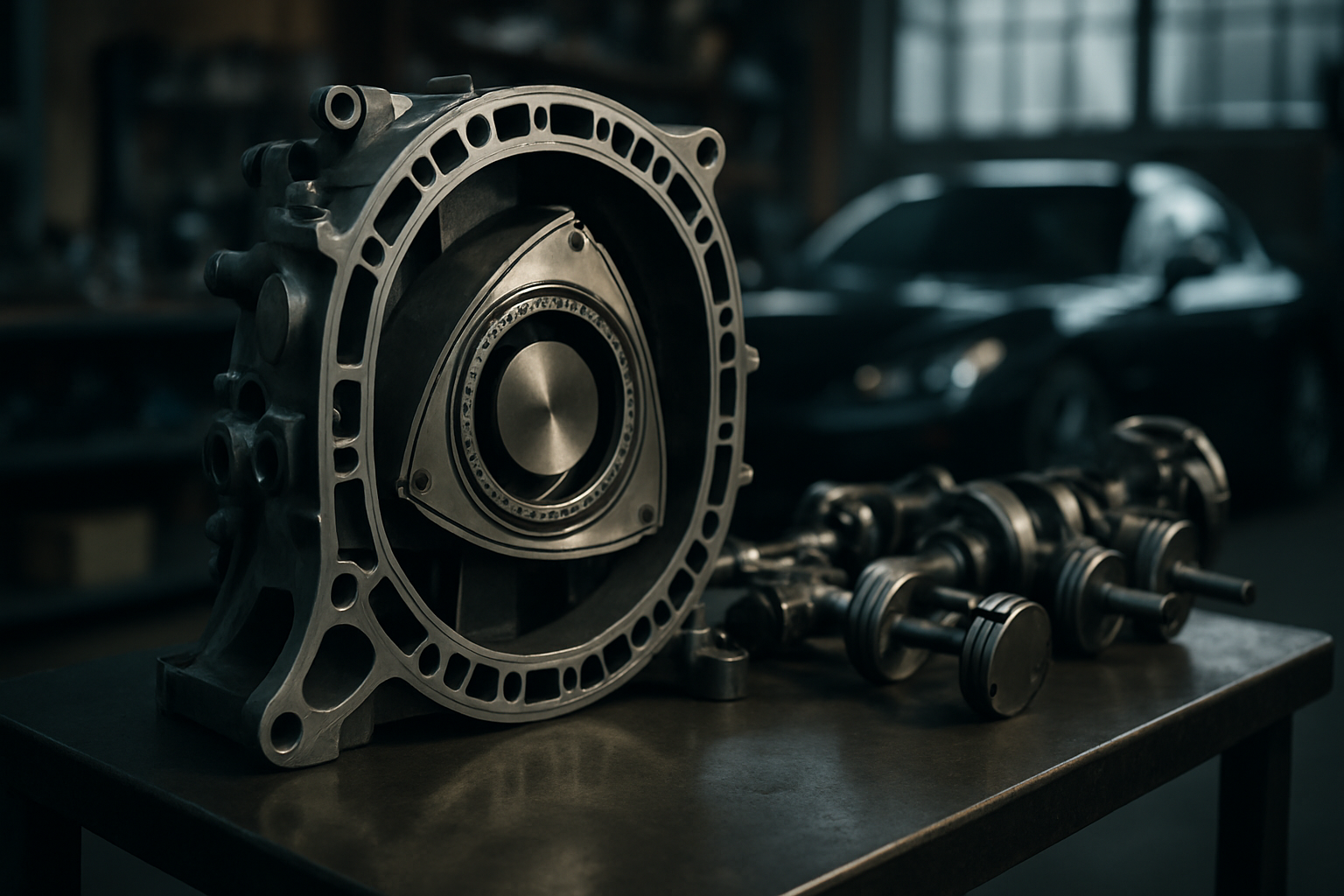Rediscovery of the Rotary Engine: A New Hope for the Wankel
A mechanical marvel from the past is attempting a comeback, strutting its unique features once again. The rotary engine, or Wankel engine, is re-emerging from the shadows. The automotive industry’s renewed interest in this old horse might just herald a revolution in internal combustion engine technology.

The Rotary Engine: A Trip Down Memory Lane
The rotary engine, officially known as the Wankel engine, was the brainchild of Felix Wankel, a German engineer, who first conceptualized the design in 1924. Unlike traditional piston engines, the Wankel engine operates with a rotor that rotates inside a housing, rather than pistons that move up and down in cylinders.
The design was radical and promised several benefits. It was lighter, simpler, and more compact than a piston engine, with fewer moving parts and a smoother operation. Furthermore, it offered high power output relative to its size, making it ideal for small, sporty cars.
However, the Wankel engine also had its share of problems. It struggled with fuel efficiency, emissions, and reliability issues, which eventually led to its decline.
A New Chapter: Recent Developments and Innovations
Despite its initial shortcomings, the Wankel engine is experiencing a resurgence of interest. A number of automotive companies have begun to reconsider the potential and applicability of this technology, implementing modern advancements to overcome its historic challenges.
For instance, manufacturers are exploring the use of advanced materials for the rotor and housing to minimize wear and tear. This not only enhances durability but also improves the engine’s efficiency and performance. Meanwhile, others are investigating the use of direct injection and laser ignition to address the fuel efficiency and emission issues that plagued earlier versions of the Wankel engine.
The Promise and Potential of the Modern Wankel Engine
The modern iterations of the Wankel engine promise to deliver the benefits of the original design while mitigating its drawbacks. In particular, the engine’s compact size, lightweight construction, and high power output make it an attractive proposition for today’s performance-oriented vehicles.
Moreover, the unique operating characteristics of the Wankel engine, such as its smooth and vibration-free operation, can significantly enhance the driving experience. At the same time, its simple construction and fewer moving parts can potentially reduce maintenance costs and increase reliability.
Challenges and Concerns: Obstacles to Widespread Adoption
Despite its potential, the Wankel engine does face challenges that could hinder its widespread adoption. Achieving high fuel efficiency and low emissions is still a significant hurdle for this technology, especially given the stringent environmental regulations in many regions.
Moreover, the unconventional design of the Wankel engine makes it unfamiliar to most mechanics and technicians, potentially leading to maintenance and repair issues. The lack of widespread knowledge and experience with this technology could also impact consumer acceptance and adoption.
Final Thoughts: The Future of the Wankel Engine
The Wankel engine’s story is far from over. With the advances in materials and combustion technologies, the industry could well see the Wankel engine re-emerge as a viable alternative to conventional piston engines. While challenges remain, the journey of this mechanical marvel from the past to the future is undoubtedly one to watch.





